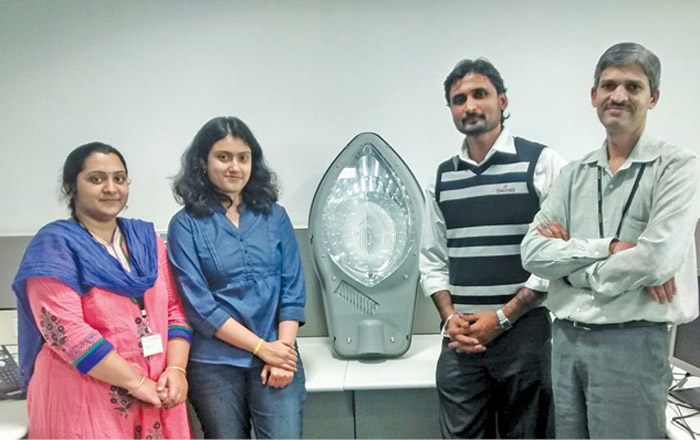Prabhu says, “Real-time control on Google Maps to track energy consumption and savings is also possible.” There could be a few products of this nature available in the market today. “What sets this apart is a robust software platform, which provides complete end-to-end solution for Big Data handling (of millions of devices), which is unique,” she adds.
The platform is licensed to customers, and Bosch will get the licence cost from the solution. Street lighting system operators benefit by better service quality and reduced operational costs by getting transparency and automation in the system. Society, on the other hand, will get the benefit of uninterrupted power supply and better lighting.
Brief working of the solution
SSLMS uses Raspberry Pi and M2M software platform from Bosch Software Innovations. “The M2M software platform acts as the basis for integrated M2M solutions operating in the IoT and services,” informs Prabhu. It consists of three major building blocks, which are:
Device integration. These use device drivers running on M2M back-end hubs.
Applications. These are artefacts such as business process management (BPM) based processes, business rules management (BRM) based guidelines or third-party applications leveraging device capabilities.
M2M device management. This acts as middleware between the two blocks mentioned above.
The application server is hosted on cloud infrastructure, informs Prabhu. She says, “The streetlamp data is aggregated at a Bosch-developed control unit deployed on a Raspberry Pi board.”
“Data processing and storage is done using Bosch’s IoT Suite platform, built for M2M communication. The application can be run on any smartphone device. The lamp is an induction lamp with Zigbee communication capabilities,” she adds.
Challenges faced along the way
Most of the difficulties faced by the team were software-related. “It took three months to adapt the software platform to the lighting system. But the hardware development of the connected lighting ballast and server platform software was being worked on from quite some time,” notes Prabhu.

Understanding communication patterns of lamps and integration with the Bosch device control unit was a difficult task. She adds, “Building M2M portable software to fit to different lighting systems and communication channels was a challenge.”
Benchmarking of various kinds of lighting systems and selection of platforms that address the issues, which are also scalable and secure, were some other problems that the team overcame. Prabhu says, “Even though there were location-specific issues such as inconsistency of wireless connectivity faced during initial pilots, these were solved with the technical-domain competency available within Bosch teams.”
The road ahead
In the future, additional features like weather report integration, predictive fault repair and integrated warranty management can be added based on requirement. This smart street lighting solution provides a stable infrastructure for outdoor-lighting management.
Prabhu says, “We believe that in the near future, the streetlight would lead to building an intelligent distributed network that helps in city security, traffic management and for city communication.”






